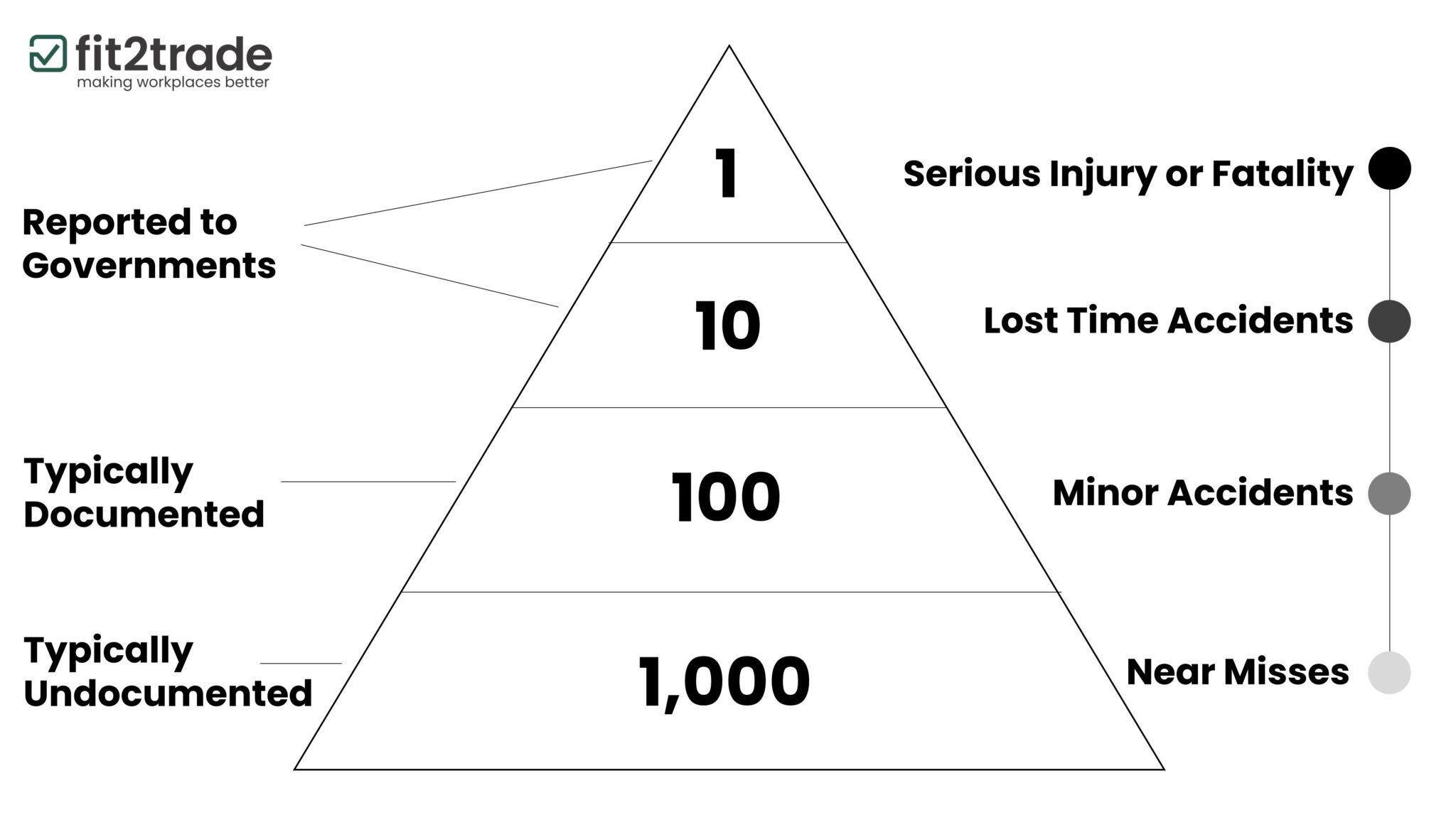The Critical Importance that Effective Near Miss Reporting in Workplace Safety

The importance of Near Miss Reporting can’t be overstated. In the ever-evolving landscape of workplace safety, Health and Safety Managers play a pivotal role in fostering a culture of safety and prevention. A key component of this role involves understanding and advocating for the importance of near miss reporting. These incidents, which could have resulted in injury, illness, or damage but did not, offer invaluable insights into potential hazards and risks in the workplace.
What is Near Miss Reporting?
Near miss reporting refers to the process of documenting incidents that have the potential to cause harm but fortunately do not. This includes situations where an accident or injury was narrowly avoided. These reports are critical for identifying and mitigating risks before they result in actual harm.
Understanding the Safety Pyramid: The Safety Pyramid, popularized by H.W. Heinrich, suggests that for every major accident, there are numerous minor incidents and near misses. This model highlights the importance of addressing smaller issues before they escalate into serious accidents.

The Importance of Near Miss Reporting
Proactive Risk Management: Near miss incidents are precursors to more serious accidents. By analyzing these events, Health and Safety Managers can identify and rectify potential hazards, thus preventing future incidents.
Cultivating a Safety Culture: Encouraging near miss reporting demonstrates an organization’s commitment to safety. It creates an environment where employees are vigilant and proactive about identifying and reporting risks.
Compliance with Safety Regulations: In jurisdictions governed by OSHA (United States), HSE (United Kingdom), and HSA (Ireland), there are guidelines and sometimes requirements for reporting and investigating near misses as part of a comprehensive safety program.
Data-Driven Safety Improvements: Near miss reports provide data that can be analyzed to identify trends and common factors in workplace hazards. This data-driven approach enables targeted and effective safety interventions.
Cost Reduction: By preventing accidents, near miss reporting helps avoid costs associated with workplace injuries and illnesses, such as medical expenses, lost productivity, and potential legal liabilities.
Best Practices in Near Miss Reporting
-
Encourage Reporting: Create a non-punitive environment where employees feel comfortable reporting near misses without fear of retribution.
-
Simplify the Reporting Process: Implement an easy-to-use reporting system that is accessible to all employees.
-
Provide Training: Educate employees on the importance of near miss reporting and train them on how to identify and report such incidents.
-
Analyze Reports: Regularly review near miss reports to identify trends and areas for improvement.
-
Act on Findings: Use the insights gained from near miss reports to implement safety measures and prevent future incidents.
Fit2Trade: Your Ally in Near Miss Reporting
Near miss reporting is not just about compliance; it’s a critical tool in the proactive management of workplace safety. By understanding its importance and implementing effective reporting practices, Health and Safety Managers can significantly reduce risks and foster a culture of safety and prevention. In doing so, they not only protect their workforce but also contribute to the overall success and sustainability of their organization.
By implementing our system, organizations can cultivate a robust safety culture where every employee feels empowered and responsible for safety. Our reporting process is designed to be intuitive and accessible, encouraging widespread participation from the workforce. Moreover, Fit2Trade’s commitment to data-driven insights means that every near miss report contributes to a larger strategy of continuous safety improvement.
Remember, a near miss reported today can prevent an accident tomorrow. Let’s work together to create safer workplaces.
We provide comprehensive analysis tools that help identify trends and areas for improvement, facilitating targeted interventions. Our approach is not just about meeting compliance standards set by OSHA, HSE, and HSA; it’s about going beyond compliance to create a safer, more aware, and engaged workplace. Choosing Fit2Trade’s near miss reporting system is a proactive step towards reducing risk and enhancing the overall safety and well-being of your organization.
If this sounds like something you want for your business, reach out to Fit2Trade today! Book a free demo now to discover how we can protect your business and make it easier to report the correct info.
Written by Rory Byrne from Fit2Trade
